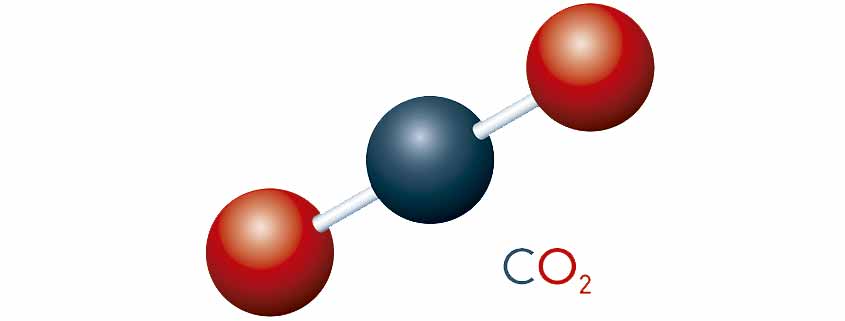Rambla Salvador Samà, 47
Vilanova i la Geltrú – Barcelona – Spain
CONTACT FORM

Carbon dioxide (CO2) is an organic gas that consists of two oxygen atoms and one carbon atom.
It is a natural compound that facilitates life on Earth. It provides the carbon needed by plants for photosynthesis and releases the oxygen (O2) that aerobic organisms, such as mammals, breathe.
It returns to the air naturally. CO2 is generated by respiration of aerobic organisms, decomposition of animals and plants, or burning of forests.

Humans have upset the balance. The burning of fossil fuels for energy, industrial processes, the burning of waste, etc. is steadily increasing the amount of carbon dioxide in the atmosphere: since 1800, the concentration of the gas has risen from 280 ppm (parts per million) to 420 ppm today.
It is a greenhouse gas, it retains heat. By increasing its presence in the atmosphere, it is causing global warming, better known as climate change, leading to heat waves and flooding.
In addition, the oceans absorb part of this additional CO2 and in this process acidify, lowering their pH. The main consequence of this is the destruction of coral reefs.
Carbon dioxide is also now more present in our homes. Houses are more airtight to save energy, but this makes it more difficult for CO2 generated by human respiration and combustion in kitchens to escape. In turn, the amount of oxygen present decreases.

Poor ventilation is a common cause of excessive carbon dioxide concentrations in indoor spaces. It is related to occupants’ health, comfort and mental performance.
At 1000 ppm and above, it decreases cognitive abilities causing fatigue and loss of performance (see study). These concentrations are usually easily exceeded after only a few hours in an enclosed dwelling.
Above 5000ppm, headaches, sleep disruption, emotional irritation and mental sluggishness are common (see study). It is difficult to achieve these values in homes and offices, but it cannot be ruled out in living spaces that are never ventilated and have airtight enclosures.
Animal studies have shown that at concentrations of 5000ppm, after only eight weeks of exposure, renal calcification and bone loss occur (see study).
Fortunately, asphyxiation does not occur until 70,000ppm.
Indoor air renewal is extremely important, as well as reducing CO2 and increasing oxygen, it allows formaldehyde and VOCs from paints, furniture and cleaning products to escape to the outside.

Rambla Salvador Samà, 47
Vilanova i la Geltrú – Barcelona – Spain

2025 © Copyright - Carles Surià